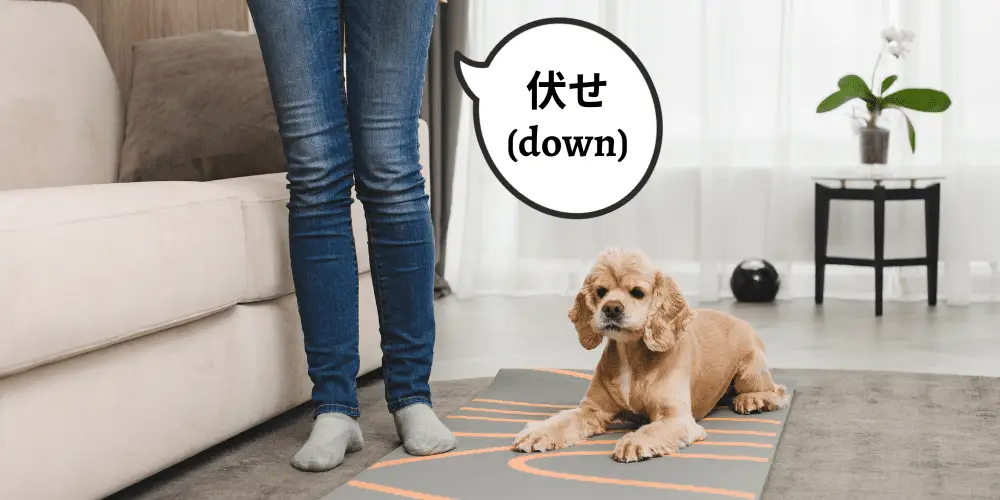Are you thinking about moving to Japan? Are you looking to train your dog more distinctively? Are you looking for an excuse to get some Japanese into your daily vernacular? Basic dog commands in Japanese can do all of the above.
Most Common Dog Commands in Japanese
When going through this list of Japanese commands, you’ll find that their meaning is similar to what we’d use in English-speaking countries.
1. “Sit” – Osuwari ( おすわり)
When it comes to bringing in some calming effect, the “sit” (pronounced oh-soo-wah-ree) command is the one that is used the most.
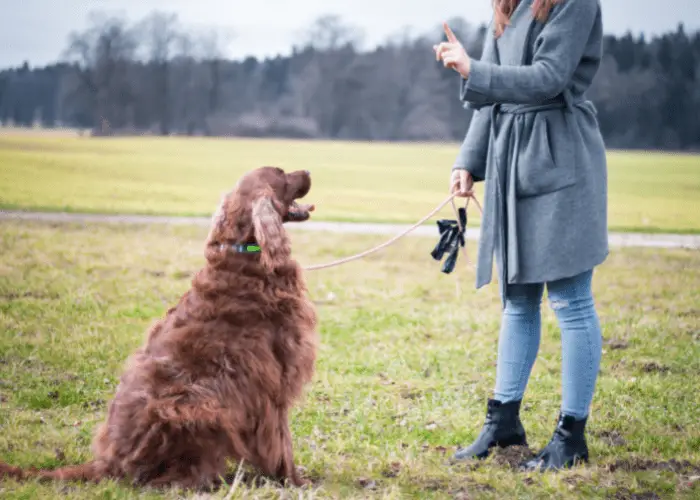
A dog trained to sit can easily concentrate on the next command and generally exhibit a calmer sense about it rather than while on all fours.
Sitting is a natural physical action taken by any dog, so it is among the easiest commands to teach.
From the sitting position, you can then build other tricks or commands into the routine. Stay is a typical following command, but another is the next in the list- shake.
2. “Shake Hand” or “Paw” – Ote ( お手 )
Though the Japanese use the word “ote” (pronounced O’te) to train a dog to shake, the word means “hand.”
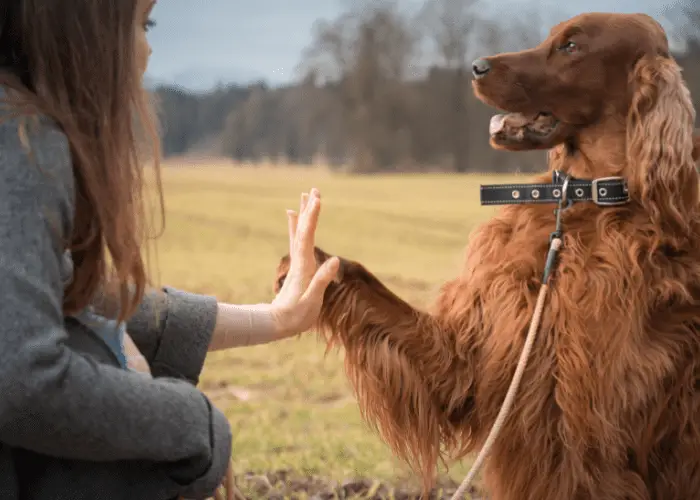
As stated above, teaching a dog to shake is one option that opens up after teaching a dog to sit.
It’s easier for a dog to reach out and give you a good shake when already sitting down, as it’s more natural from that position. However, it’s possible to teach a dog to shake while standing on all fours, but it’s a bit more awkward for the dog.
3. “Shake with the Other Hand” – Okawari (おかわり)
Okawari (pronounced oka’war’i) is the command to train dogs to shake with their other paw.
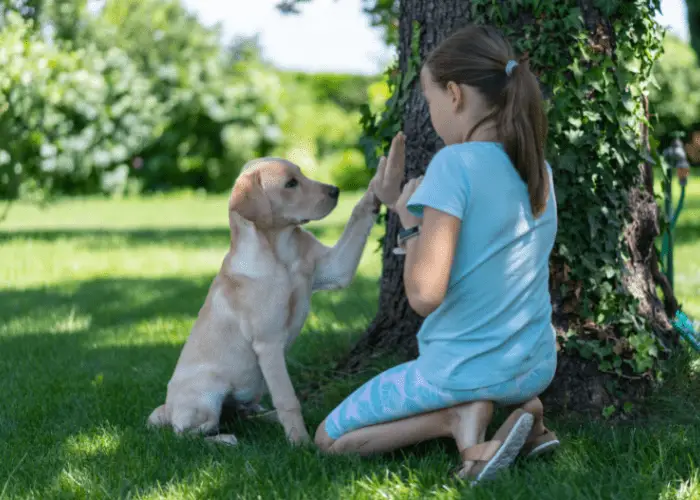
In the non-dog training world, this same word is used to ask for seconds in Japan. If you’re out to eat and want a second helping of a dish, you’d catch the waiter’s attention and say, “okawari.”
It is important to note that there are two commands concerning shaking with one paw or the other. If trained consistently, the first command, “ote,” will prompt the dog to always shake with the right paw (for example), while “okawari” would encourage it to shake with its left or opposite paw.
4. “Stay or Wait” – Mate ( まて)
Mate (pronounced ma’te) means to stay or wait.
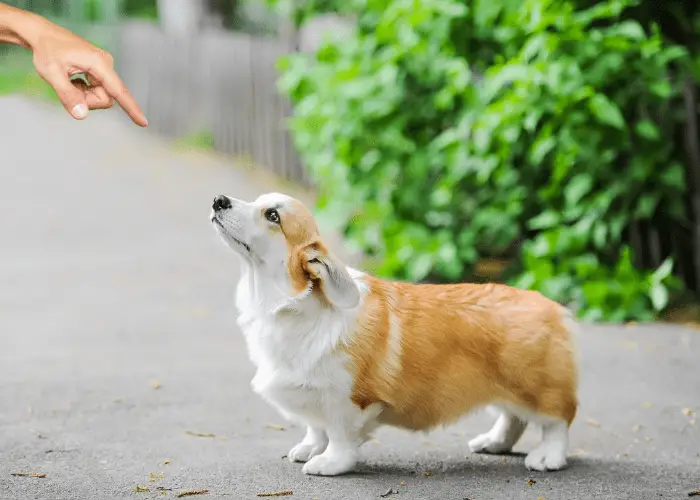
This is one of the most important commands and can be difficult at first, depending on how rambunctious the pup, in particular, might be.
Teaching your dog to stay will pay off big time down the road, as it makes many things easier to deal with. A dog who will stay on command makes life just a little bit better for the owner and garnishes that much more appreciation (along with love and attention) in the end.
5. “Go For It” – Yoshi (よし)
Yoshi (yoh-shee) means okay, go, go for it, or go ahead.
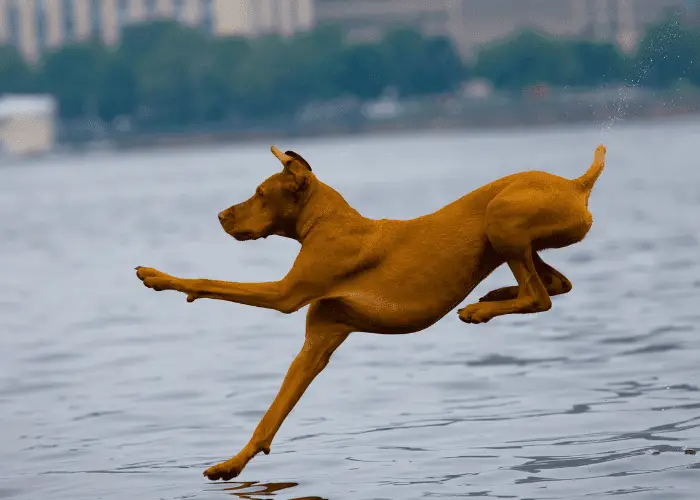
Often, this would follow the “mate” command after the dog has waited long enough to do a task or grab a point of interest- a handful of food, for example.
6. “No” – Dame (ダメ)
Dame (pronounced da’me) is the Japanese word used for a “no” command but means a strong decline.
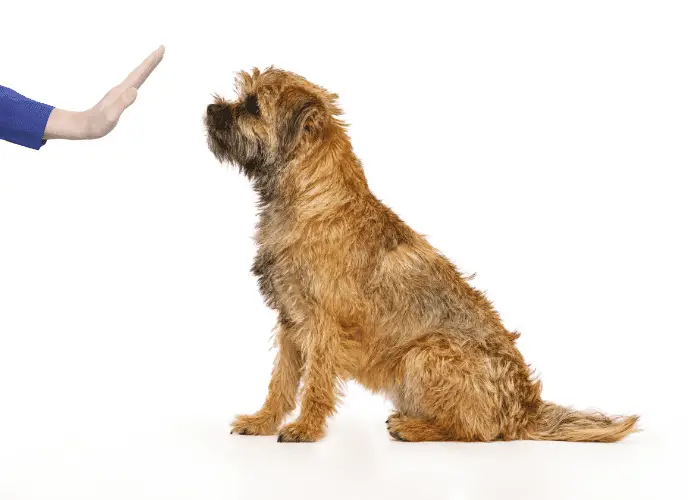
Unfortunately, a “no” command is one of the first that a puppy will learn as owners attempt to break a dog out of undesirable behavior that might come naturally to a breed.
7. “Stand Up” – Tatte (立て)
Tatte ( pronounced ta’te) is the command to teach a dog to stand on its hind legs.
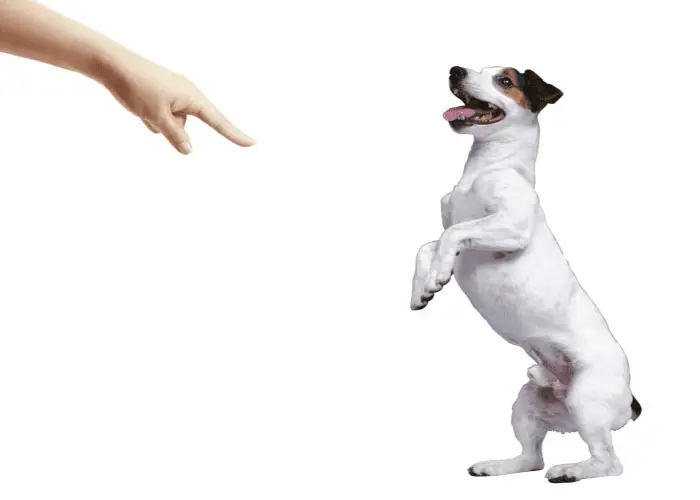
Not the most necessary command in the world, but it is a lot of fun when used as a more playful command.
8. “Down” – Fuse ( 伏せ )
Fuse (pronounced fu’se) is the Japanese word used for a “down” or “lay down” command.
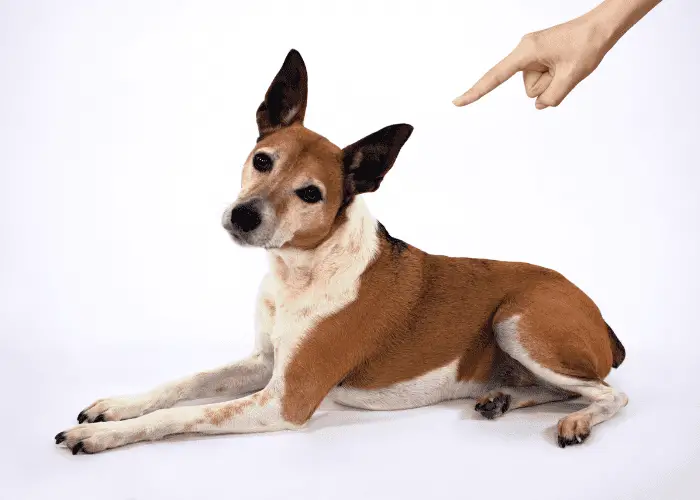
A down command is essential, particularly with larger dogs that can stand and reach into areas that you’d rather them not- counters, shelves, etc.
It’s also a handy command to keep dogs off of people, typically either very young or elderly. As a “lay down” command, this is a good one for letting the dog know that it isn’t their time to shine and to lay down and relax for a while.
9. “Come Here” – Oide (おいで)
There are two ways this word is spelled, but both are pronounced “oi’de,” meaning “come here.”
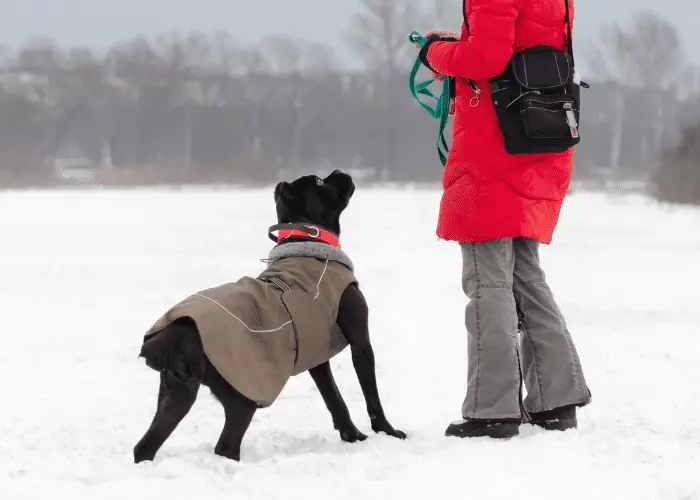
Not all dogs are instantly in-tune with their owners and sometimes need a little prompting to “come” to do this or that.
10. “Cuddle” – Dakko (だっこ)
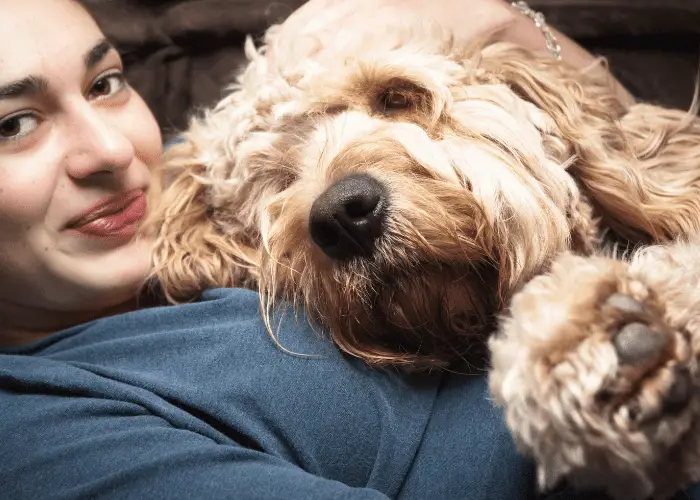
Dakko (pronounced Dak’ko) means to cuddle, where Japanese training may depart from the average dog training in predominantly English-speaking countries. Cuddling is something that owners often allow to happen naturally.
However, there’s nothing wrong with teaching a dog a clear-cut command to cuddle, allowing it to know when it’s appropriate and perhaps not. This could be advantageous in work environments or busy households where there’s a lot of people traffic.
11. “High Five” – Tacchi ( タッチ)
Tacchi (pronounced tach’i) is derived from the English word “touch,” used for a high five command.
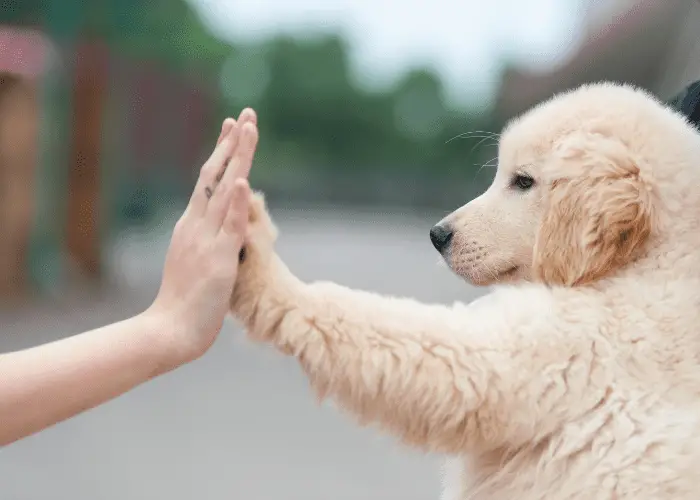 If you’ve taught your dog to “ote” (shake) or “okawari” (shake with the other paw), you might as well teach it to “tacchi.”
If you’ve taught your dog to “ote” (shake) or “okawari” (shake with the other paw), you might as well teach it to “tacchi.”
From the dog’s point of view, a high five is a natural progression from a paw shake. High fives should be an easy next step if you can teach it to give a shake.
12. “Ready to Go?” – Ikimashouka (いきましょう)
Ikimashouka (pronounced iki-ma-shou-ka) is a command that allows the dog to know that it’s time to either wrap things up or it’s time to get things started, meaning “Ready to go?” or “Let’s go.”

13. “Fetch/Bring” – Motte Kite ( もってきて)
Motte Kite (pronounced mot’te k’te) is what the Japanese use for the word fetch.
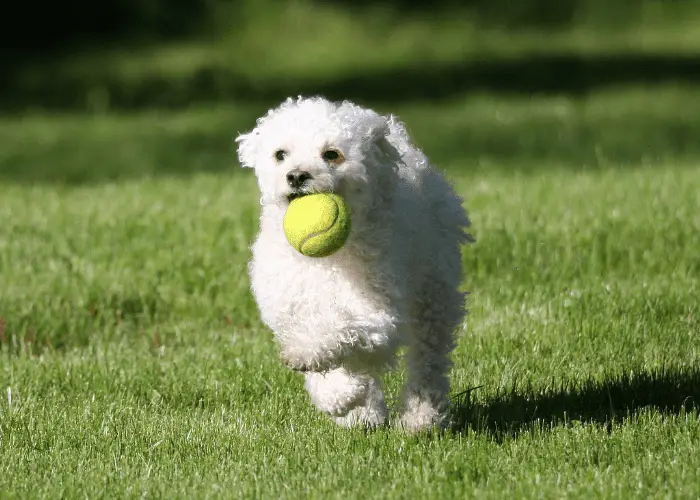
Fetch is one of a dog’s favorite pastimes and is a great way to combine play with training- also an excellent opportunity to get the dog to blow off some steam.
Final Thoughts

Though there are several advantages to teaching your dog commands in other languages, it is important to stay consistent throughout the dog’s training.
Remaining consistent in one language will help the dog learn, understand, and recall commands better, rather than becoming confused by using too many words for each command.
There are other Japanese words concerning other tricks or commands that one may wish to teach their dog. These thirteen are, however, the most popular and the simplest to learn and a great place to get started with your pup.
RELATED ARTICLE: 13 Native Japanese Dog Breeds

